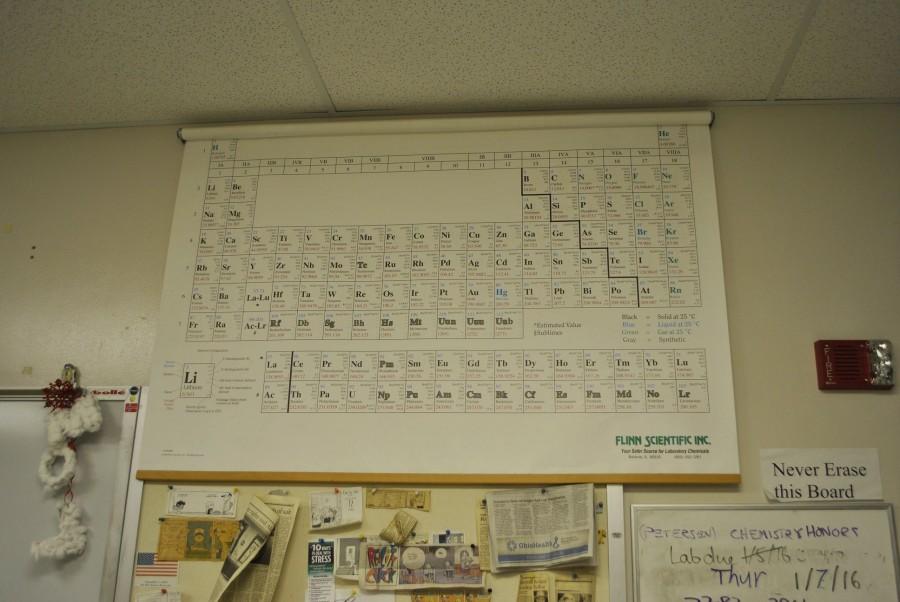Four New Elements Added to the Periodic Table
Oxygen. Carbon. Aluminum. Magnesium. What do all these have in common? If you’re a chemist, you’ll know it’s not really much, but they all have permanent seats on the periodic table. And, on December 30th, 2015, four more elements earned their chairs: 113, 115, 117, 118.
According to the Science News website, the International Union of Pure and Applied Chemistry–the United Nations of chemistry–got together and announced that a collaboration between the United States’s Lawrence Livermore National Laboratory and Russia’s Joint Institute for Nuclear Research gave enough evidence to have officially discovered elements 115, 117, and 118. In addition, the Japanese RIKEN collaboration team has officially discovered element 113.
These research groups will have the opportunity to suggest names and symbols for the elements, and these decisions and the discovered properties of the new elements will be published first in the IUPAC journal. According to the IUPAC website, names can be derived from any concept, place, or otherwise, but will all be checked by the IUPAC itself to make sure the names can be translated and that they were not used prior to this naming.
Although a very interesting and exciting discovery, these new elements may not actually be very scientifically valuable. The periodic table is now complete up to the seventh row, but that does not mean it is finished: one day, there might be an eighth and ninth row added to the table. Now that synthetic elements are acceptable, scientists can theoretically make millions more elements.
“[The new elements are] probably not very useful because they only last a femtosecond [or 1.0×1015 seconds],” said Mrs. Sarah Stoub, a chemistry Honors teacher. “Larger synthesized elements in general are not usually stable.”
The IUPAC and credited establishments have not released the properties of the elements, but, according to Mr. Dave Petersen, an AP Chemistry teacher, “If the IUPAC got to the point where they agreed on something, then there must be enough evidence to claim it has been produced.”
Because it lasts for such a short period of time, Mrs. Stoub also commented that they will be interesting to look at during the half lives unit. “Their small numbers are interesting,” she said.
However, other than that, these new elements are more aesthetic contributions than anything.

